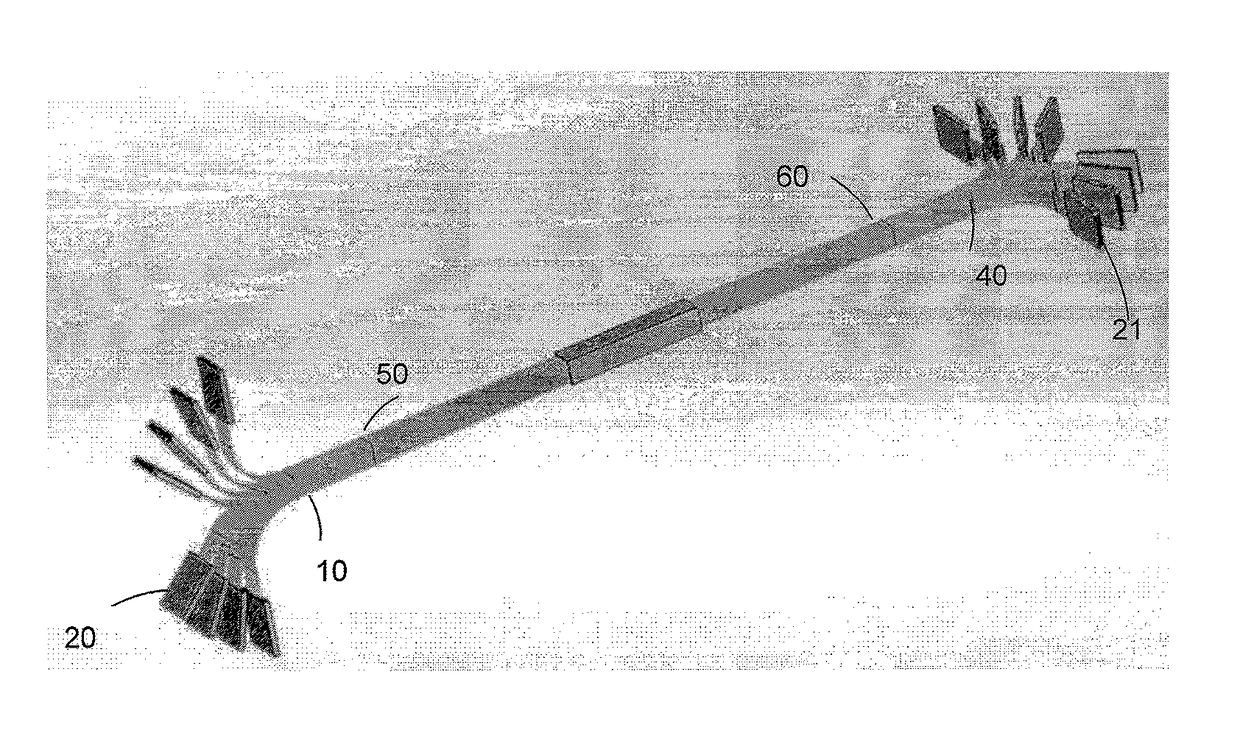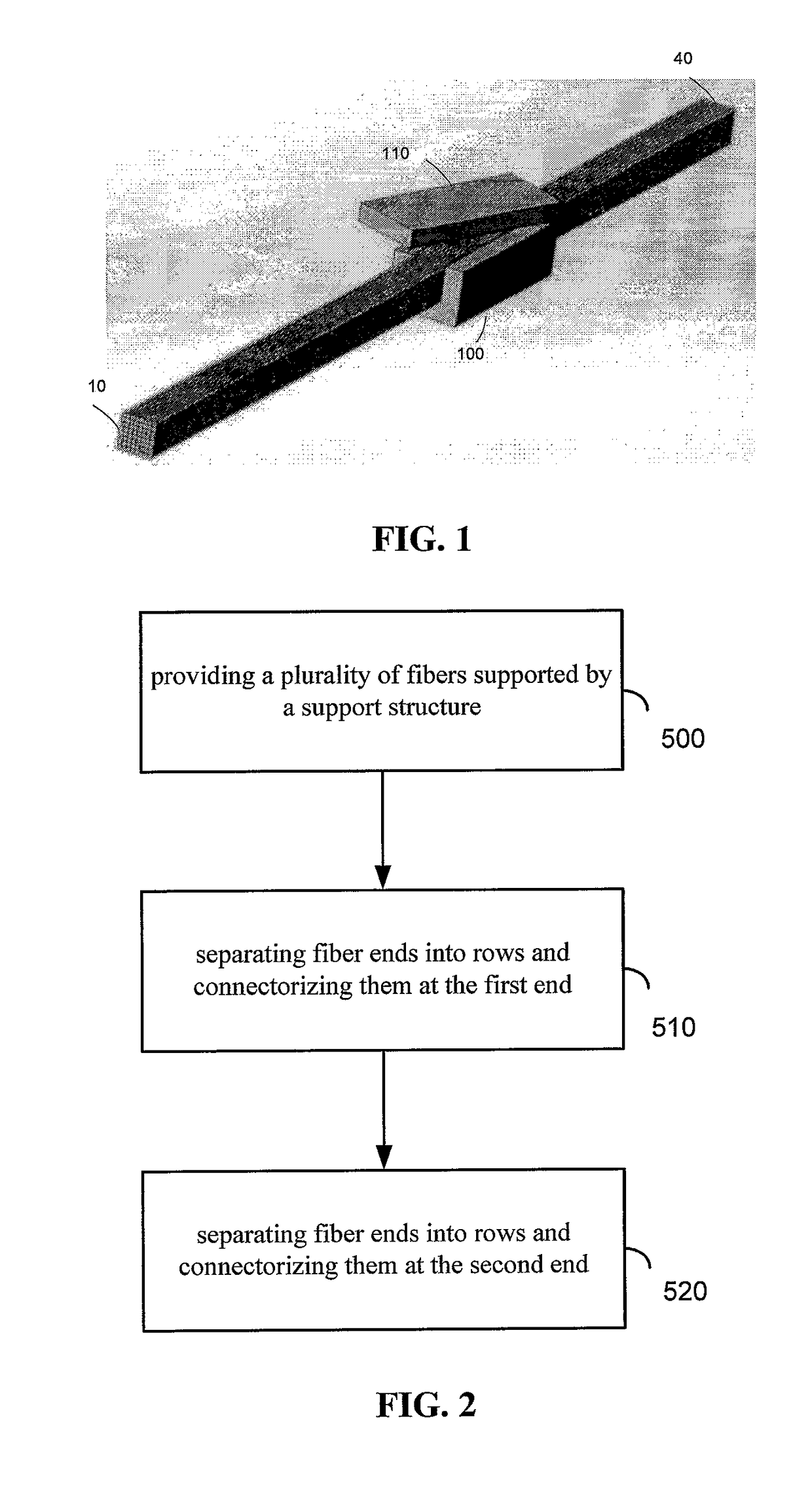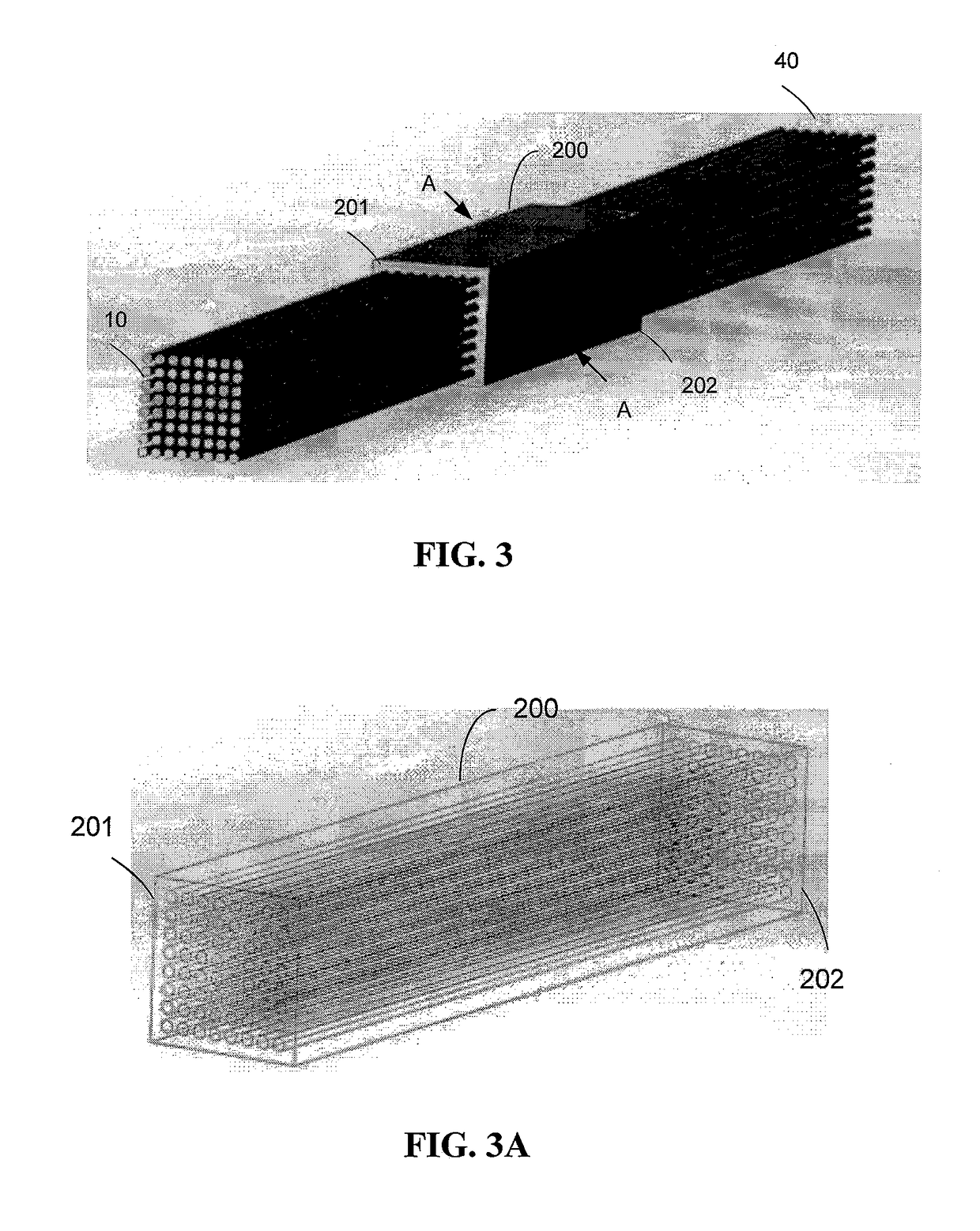Regroup NxM optical cable
a technology of optical cables and nxm, applied in the field of optical cables, can solve the problems of human errors in the placement of fibers in complex configurations, circuits limiting the maximum bandwidth of signals, and large size of fiber plates
- Summary
- Abstract
- Description
- Claims
- Application Information
AI Technical Summary
Benefits of technology
Problems solved by technology
Method used
Image
Examples
Embodiment Construction
[0021]The method disclosed herein is based on an observation that an N by M matrix of fiber ends may have connectors attached either horizontally or vertically with respect to the instant position of the matrix. In other words, the N×M arrangement of fibers that has N rows and M columns may be connectorized with N connectors or with M connectors. The inventor has realized that, if the N×M arrangement of fibers is maintained, using M connectors at one end of the cable and N connectors—at the other end will form an interconnect device without actual shuffling of fibers, but only regrouping the fibers differently at different ends of the cable.
[0022]FIG. 1 illustrates a convenient way of arranging fibers by placing then in a Π-shaped support 100 with an optional lid 110, The rectangular cross-section of the support 100 helps to arrange the fibers into an N×M arrangement. With the sufficient length of the support, the fibers are kept parallel to each other within the support and fiber e...
PUM
 Login to View More
Login to View More Abstract
Description
Claims
Application Information
 Login to View More
Login to View More - R&D
- Intellectual Property
- Life Sciences
- Materials
- Tech Scout
- Unparalleled Data Quality
- Higher Quality Content
- 60% Fewer Hallucinations
Browse by: Latest US Patents, China's latest patents, Technical Efficacy Thesaurus, Application Domain, Technology Topic, Popular Technical Reports.
© 2025 PatSnap. All rights reserved.Legal|Privacy policy|Modern Slavery Act Transparency Statement|Sitemap|About US| Contact US: help@patsnap.com



